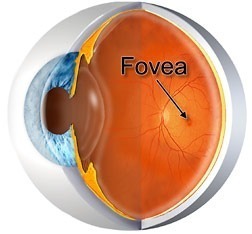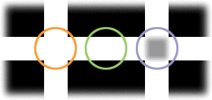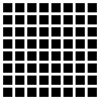Tease your brain with the Hermann Grid illusion
Here’s a beautiful example of the Hermann Grid illusion in the real-world: You will notice faint white circles appear where the horizontal and vertical slats intersect in the window frame (even if no white circles are there at all!)
Hermann ferry port door grid illusion :)
(?stanbul) pic.twitter.com/SrnZup6UJ9—
Aysun Ülger (@aysun_ulger) September
3, 2019
The Hermann Grid illusion
In this image, do you see something other than black and white?
While there are only black blocks and white spaces in the grid, the high contrast black and white areas fool the eyes into perceiving a gray circle at each intersection. The illusion results from  retinal cells adjusting the brightness of an image by adjusting the intensity of the light signal in many small sections. The size of these small sections is determined by the size of neural receptive fields in the retina.
retinal cells adjusting the brightness of an image by adjusting the intensity of the light signal in many small sections. The size of these small sections is determined by the size of neural receptive fields in the retina.
The fovea, an area near the center of your retina with the highest resolution vision, has the smallest receptive fields and the highest number of photoreceptor cells. Areas of your retina dedicated to peripheral vision have larger receptive fields, and therefore, lower resolution viewing.
In the Hermann Grid, the intersection that you are looking directly at falls onto the fovea, which has very little lateral inhibition due to the small receptive field and high concentra tion of photoreceptors. Our perception within this area is fairly accurate, and we see the area as either white or light gray. In the area within the green circle, the dark and light areas are balanced, so no gain adjustment is needed, and we see this area as white. At the peripheral intersections (purple circle), most of the receptive field is flooded with white light, causing strong lateral inhibition which results in reduced gain and an area that appears gray.
tion of photoreceptors. Our perception within this area is fairly accurate, and we see the area as either white or light gray. In the area within the green circle, the dark and light areas are balanced, so no gain adjustment is needed, and we see this area as white. At the peripheral intersections (purple circle), most of the receptive field is flooded with white light, causing strong lateral inhibition which results in reduced gain and an area that appears gray.



